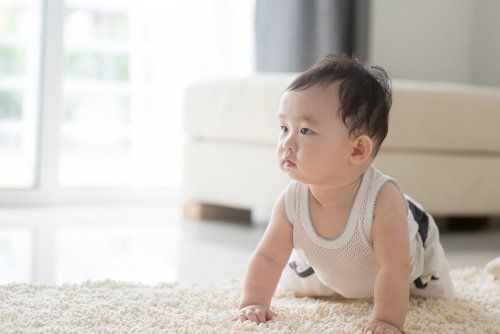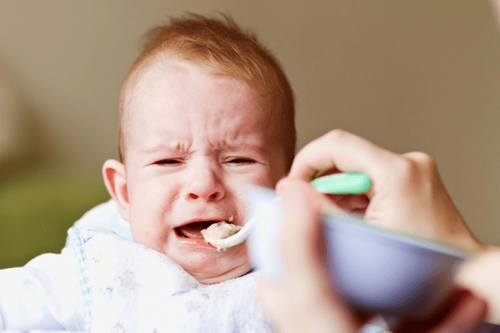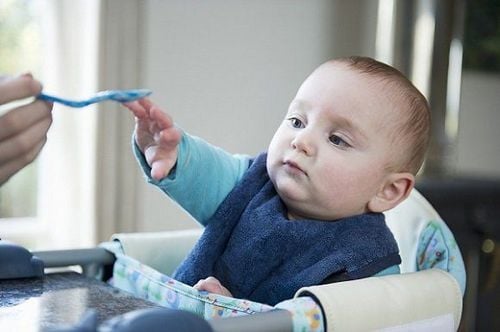This is an automatically translated article.
The article is professionally consulted by Master, Doctor Truong Thanh Tam - Pediatrician - Department of Pediatrics - Neonatology - Vinmec Danang International General Hospital.Tracking your 37-week-old baby's development and milestones like talking, walking, growth, memory and more will make it easier for parents to care for them. daily.
1. 37 weeks old baby milestone
By the time a baby is 37 weeks or 9 months old, there is a marked increase in cognitive and physical awareness of himself and his surroundings. You may need to pay attention to the behavior that your child can put anything in his mouth that is not safe or that the child may crawl to unsafe areas such as stairs, kitchen... This happens without It is inevitable because your child wants to be moved around the house to explore and the more he moves, the more he will encounter many inappropriate and unsafe places for him at this time.To create a safer environment for your 37-week-old baby, here are a few things you can do to create a more positive experience for both you and your baby:
Create a safer space: This can include Includes gates, pillows and low furniture that allow your baby to have a safe space to crawl and explore. Take your child to a safer place: Think about how you express the limits your child needs to meet. Try to use non-negative words and phrases. For example, I see you want to experience and explore your surroundings. I will take you to this area (space with friendly items), you can continue to explore however you want. When parents realize the importance of how to communicate with their children, it is a great way to help children experience more positive learning methods through communication. Sometimes it's inevitable to have to say "no" to your child, but when you understand the importance of why your child does what he or she is doing, it can help you get him to safety. and communicate with your child in a positive way.
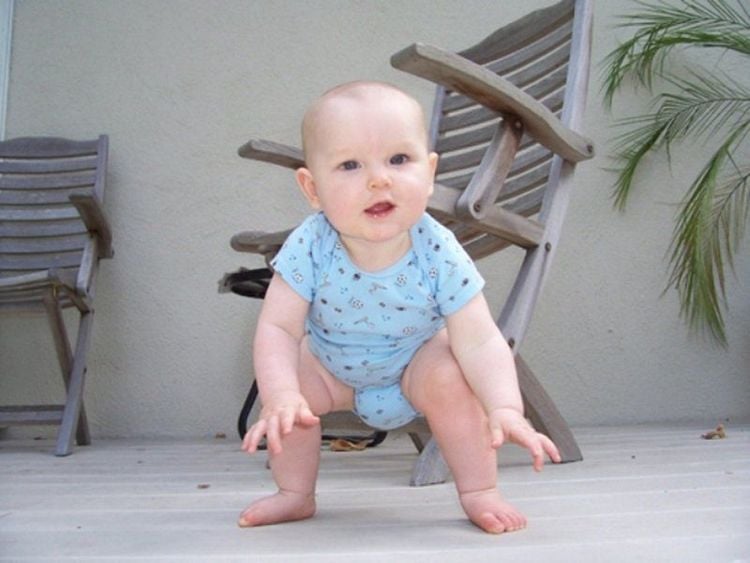
Thời điểm trẻ 37 tuần tuổi hay 9 tháng tuổi đã gia tăng rõ hơn về mặt nhận thức và thể chất về bản thân và môi trường xung quanh
2. 37 weeks old baby can start taking first steps
You may have to babysit throughout the day during this time, when your baby starts to walk. If your baby can't walk yet (which is completely normal), he'll probably move in other ways, like needing to hold onto something to get up and walk.With all this crawling, jumping and climbing, it's extremely important that parents use devices to lock the cabinets at this time. While you don't need to buy every safety product on the market, there are a few basics you can do right now:
Fence for stairs up and down stairs: You need to secure which rows This is securely fixed and capable of keeping the baby from climbing over the fence and falling. Prepare a non-slip mat in the bath. Also, reduce the temperature of the water heater to 120 degrees F, so even if your child accidentally turns on the faucet, he or she won't get burned. Keep away from electronic screens or radiator covers and other heat sources. Drawer and cabinet safety latches: While there may be a safety latch, don't rely entirely on this to protect your baby from poisons like bleach or detergent. Instead, parents should put these products on high shelves or places where children cannot reach. Use the dedicated cover to close the electrical outlet. Also, make sure the long cord is neatly coiled or securely attached, so your child won't chew or pull the cord out. Use smoke detectors on all floors. In addition, you should use a carbon monoxide detector and fire extinguisher.
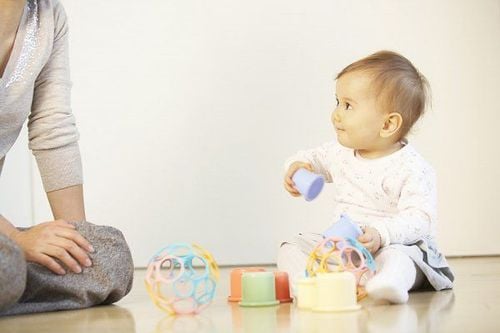
Có thể phải giữ trẻ suốt cả ngày trong khoảng thời gian này, khi trẻ bắt đầu chập chững đi
3. Your 37-week-old baby can get an ear infection
About 75% of children have at least one ear infection before the age of 3, mainly because their developing immune systems make them more susceptible to colds and respiratory infections, which are two common causes. ear infections and because the size of the eustachian tube is small, it allows fluid and bacteria to accumulate in the ear. Symptoms to watch for include earaches (your baby may tear their ears or cry if you touch them), discharge from the ears, fever, fussiness, loss of appetite, and trouble swallowing.If you suspect your child has an ear infection, take him or her to your pediatrician for an examination and diagnosis. If it's an infection, your doctor will prescribe antibiotics or recommend monitoring, as many ear infections will likely clear up on their own after a few days. During monitoring, your doctor may recommend that you give your baby acetaminophen or ibuprofen for pain and fever.
See also: Normal motor and nerve development in children 1-12 months old
If a 37-week-old baby has recurrent ear infections, he or she may need surgery. Hearing about surgery can be nerve-wracking for parents, but the surgery is fairly straightforward and the ventilation tubes allow fluid and infection-causing bacteria to build up. Plus, surgery can help your baby hear better.
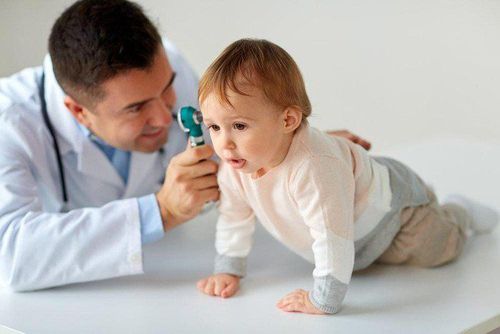
Nếu trẻ 37 tuần tuổi bị nhiễm trùng tai tái phát, trẻ có thể cần phải phẫu thuật
4. Mother 37 weeks postpartum
Establishing daily routines can help keep you and your baby calm, comfortable, and easier to care for at each stage of your baby's development. You should try to divide your day's tasks into groups such as: Wake up, clean, eat, play, go out, sleep.Wake up: After waking up, lay your baby in the crib or bed for about 5-10 minutes before you hold her (unless there is a cry). This allows your baby some time to gradually wake up completely. In addition, this period allows the eyes to adjust to the light, the child moves to help stay awake. Hygiene: After you hold your baby, you should change his diaper, brush his hair, and dress him, even if you don't plan on taking him out to play. Eating: At this point you can give your baby breast milk or a bottle. Parents note, after the child has finished eating, parents need to straighten their back and pat the back to push the air in the child's belly out. Play: Spend 5-10 minutes building bonding and playing with your baby. Put your baby on the floor with them and play fun games they love. Then help them play around with some of their favorite toys as you prepare them to play on their own. This is very important, because when playing is like the child is exercising every day and helps the child to fall asleep easily. Sleep: After all the activities above, it's time for your baby to take a nap. Practice a nap routine like feeding your baby one more time, turning off the lights, putting him in his sleeping bag, and putting him to bed. When your baby wakes up, start over. You will be surprised at how consistently these daily routines will help as your baby goes through a period of growth and development.

Người mẹ nên học cách thích nghi với từng giai đoạn phát triển của trẻ
In addition to zinc, parents also need to supplement their children with other important vitamins and minerals such as lysine, chromium, B vitamins,... errands.
Please regularly visit Vinmec.com website and update useful information to take care of your baby and family.
References: mamanatural.com, parents.com






